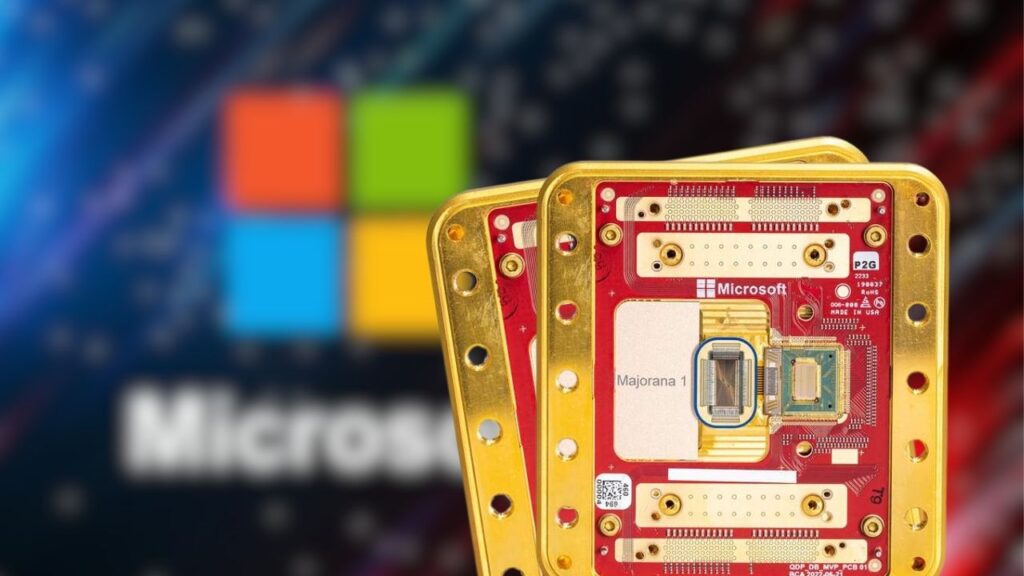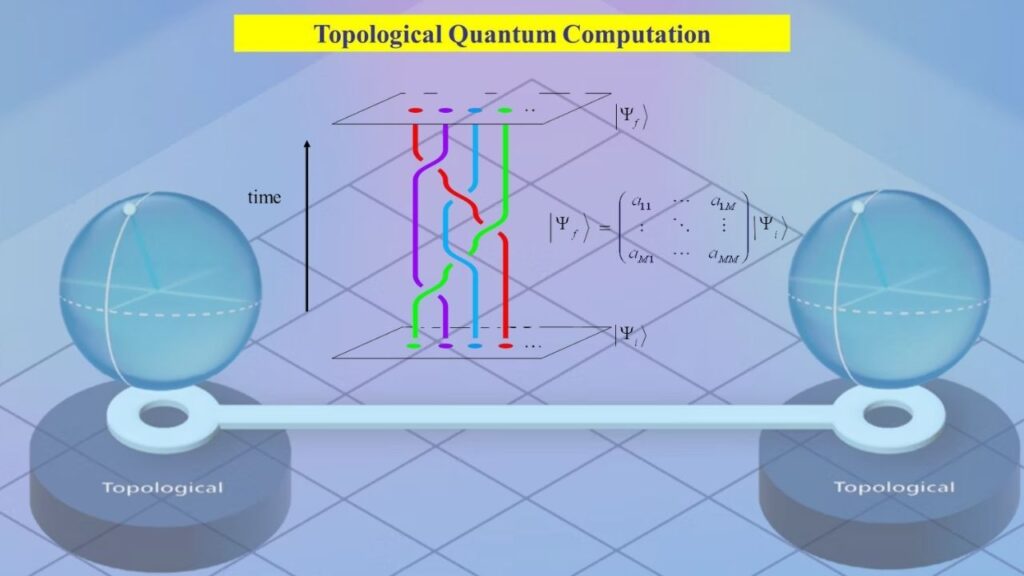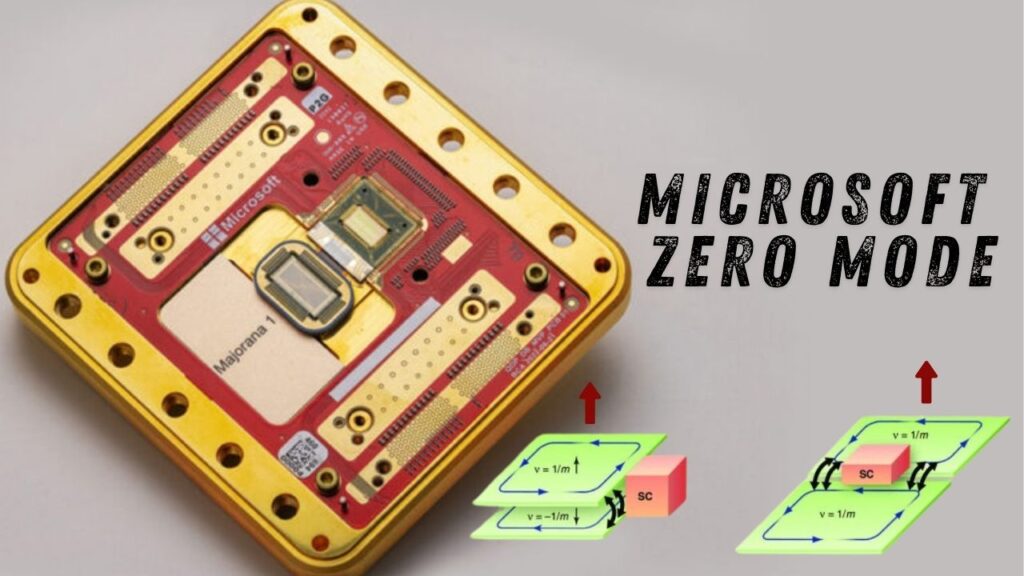Microsoft Debuts Majorana 1 Processor: Quantum computing has long been the stuff of science fiction, promising computers so powerful they could crack codes, invent new medicines, and solve problems that stump even the world’s fastest supercomputers.

In 2025, Microsoft debuts Majorana 1 processor: topological qubits pave way for million-qubit quantum chips—a headline that signals a real, tangible leap toward that future. This article will guide you through what makes Majorana 1 so special, why topological qubits are a game-changer, and how this technology could transform industries, research, and everyday life.
Microsoft Debuts Majorana 1 Processor
| Feature/Fact | Details |
|---|---|
| Processor Name | Majorana 1 |
| Developer | Microsoft |
| Qubit Type | Topological qubits (Majorana zero modes) |
| Material | Topoconductor (indium arsenide + aluminum) |
| Current Qubit Count | 8 qubits (scalable to 1 million+) |
| Error Resistance | Exceptionally high, due to topological protection |
| Potential Applications | Drug discovery, pollution reduction, self-healing materials, industrial optimization, and more |
| Official Website | Microsoft Quantum Computing |
| Launch Date | February 2025 |
| Significance | First practical path to million-qubit quantum computers |
Understanding the Majorana 1 Processor
What is Majorana 1?
Majorana 1 is the world’s first quantum processor powered by a topological core architecture, developed by Microsoft. Unlike traditional quantum chips, which use superconducting or trapped ion qubits, Majorana 1 employs topological qubits—a fundamentally new approach that could finally make large-scale, error-resistant quantum computing possible.

At the heart of Majorana 1 is the topoconductor, a new material stack combining indium arsenide and aluminum, engineered to host and control exotic particles known as Majorana zero modes (MZMs). These particles are theorized to enable qubits that are inherently protected from many sources of error, a property that has eluded most other quantum computing technologies.
How is Majorana 1 Built?
- Nanowire Structure: The chip uses aluminum nanowires arranged in an “H” shape. Each “H” structure contains four controllable Majorana particles, which together form a single qubit.
- Hybrid Device: Majorana 1 is an indium arsenide–aluminum hybrid device that becomes superconducting at extremely low temperatures, a requirement for stable quantum operations.
- Scalability: The architecture is designed to fit a million qubits on a single chip that could fit in the palm of your hand—an unprecedented leap in quantum hardware.
Why Topological Qubits?
Traditional qubits are highly sensitive to their environment. Even the smallest disturbance—like a stray photon or a tiny vibration—can cause them to lose their quantum state, leading to errors. Topological qubits, however, store information in the topological properties of the system, which are naturally protected from many local disturbances. This means:
- Fewer Errors: Topological qubits are expected to be much less prone to errors, reducing the need for complex error correction.
- Higher Stability: They can maintain their quantum state for longer, allowing for more complex calculations.
- True Scalability: With fewer errors, it becomes possible to build much larger quantum computers—potentially with millions of qubits.
The Science Behind Majorana 1
What are Majorana Zero Modes?
Majorana zero modes (MZMs) are special quantum states that are their own antiparticles, first theorized by Italian physicist Ettore Majorana in the 1930s. In the context of quantum computing, these modes can be created at the ends of superconducting nanowires and can be manipulated to form qubits. Their unique properties make them promising candidates for robust, fault-tolerant quantum computing.
How Does the Topoconductor Work?
Microsoft’s topoconductor is a breakthrough material that combines a semiconductor (indium arsenide) with a superconductor (aluminum). When cooled to near absolute zero, this hybrid material can host Majorana zero modes at the boundaries of the nanowires. By carefully tuning the device, researchers can control these modes and use them as qubits.

Why is Majorana 1 a Breakthrough?
The Million-Qubit Challenge
Most quantum computers today operate with just a few dozen to a few hundred qubits. However, experts agree that to solve meaningful, real-world problems—such as simulating complex molecules for drug discovery or optimizing massive industrial systems—a quantum computer will need at least a million qubits.
Majorana 1 is the first chip designed with a clear roadmap to reach this scale. Its architecture, materials, and error-resistance properties make it possible to envision a future where quantum computers can finally deliver on their promise.
Real-World Applications
A million-qubit quantum computer could:
- Revolutionize Drug Discovery: By simulating molecules at the quantum level, new medicines could be designed faster and more accurately than ever before.
- Combat Pollution: Quantum simulations could help break down microplastics or design new catalysts for clean energy.
- Invent Self-Healing Materials: Materials that repair themselves could transform construction, manufacturing, and healthcare.
- Optimize Global Systems: From supply chains to financial markets, quantum computers could solve optimization problems that are currently intractable for classical computers.
Industry and Academic Impact
Microsoft’s breakthrough is not just a technical achievement—it’s a signal to the entire industry and academic world that scalable, practical quantum computing is within reach. Leading researchers, such as Chetan Nayak, have likened the invention of the topoconductor to the invention of the transistor for the quantum age.
How Does Majorana 1 Compare to Other Quantum Chips?
| Feature | Majorana 1 (Microsoft) | Traditional Quantum Chips |
|---|---|---|
| Qubit Type | Topological (Majorana) | Superconducting, Trapped Ion, etc. |
| Error Resistance | High (hardware-level) | Moderate to Low (software-level) |
| Scalability | Million+ qubits possible | Usually <1000 qubits |
| Material | Topoconductor | Conventional superconductors |
| Current Qubit Count | 8 (scalable to 1M+) | Tens to hundreds |
| Size | Palm-sized | Varies, often much larger |
Step-by-Step Guide: How Majorana 1 Works
1. Material Engineering
Scientists engineer the topoconductor by layering indium arsenide and aluminum at the atomic level, creating a platform that can host Majorana zero modes.
2. Nanowire Fabrication
Aluminum nanowires are arranged in precise H-shaped structures, each designed to host four Majorana particles, forming a single, stable qubit.
3. Supercooling
The chip is cooled to temperatures near absolute zero (about -273°C), enabling superconductivity and the formation of Majorana zero modes.
4. Qubit Initialization and Control
By applying specific voltages and magnetic fields, scientists can create, manipulate, and read the state of each topological qubit.
5. Quantum Computation
The qubits interact to perform calculations, with their topological nature protecting them from many common sources of error.
6. Scaling Up
The architecture allows for many H-shaped nanowire structures to be packed densely, paving the way for chips with a million or more qubits.
Practical Advice: What Does This Mean for You?
For Students and Learners
- Start with the Basics: Learn about bits, qubits, and the fundamentals of quantum mechanics. There are many reputable online resources and educational platforms to begin your journey.
- Stay Curious: Quantum computing is a rapidly evolving field. The skills you learn today could be the foundation for tomorrow’s breakthroughs.
For Professionals and Businesses
- Prepare for Quantum Disruption: Industries like pharmaceuticals, energy, and logistics are likely to be transformed by quantum computing. Begin exploring how quantum algorithms could impact your sector.
- Invest in Training: Upskill your team in quantum programming and data science to stay ahead of the curve.
For Developers and Researchers
- Experiment with Quantum Tools: Many cloud platforms now offer quantum computing resources for running algorithms and simulations.
- Collaborate and Innovate: Join academic and industry partnerships to contribute to the growing quantum ecosystem.
Breakthrough Carbon Capture Method Could Make Cement Ingredients Climate-Friendly
Researchers At FAMU–FSU Reveal Universal Law Of Quantum Vortex Dynamics
FAQs About Microsoft Debuts Majorana 1 Processor
What is a qubit?
A qubit is the basic unit of quantum information. Unlike a classical bit (which is either 0 or 1), a qubit can exist in a superposition of both states at once, enabling powerful new types of computation.
Why are topological qubits important?
Topological qubits are expected to be much more stable and less prone to errors than traditional qubits, making it possible to build larger, more reliable quantum computers.
How many qubits does Majorana 1 have?
The first Majorana 1 chip contains 8 qubits, but its architecture is designed to scale to a million or more in the future.
What makes the topoconductor special?
The topoconductor is a new material that combines semiconductor and superconductor properties, enabling the creation and control of Majorana zero modes.
When will practical quantum computers be available?
Microsoft believes that, with the Majorana 1 breakthrough, practical million-qubit quantum computers could arrive within years, not decades.
Where can I learn more?
See the official Microsoft Quantum Computing website listed in the Key Highlights table above for the latest updates and resources.






